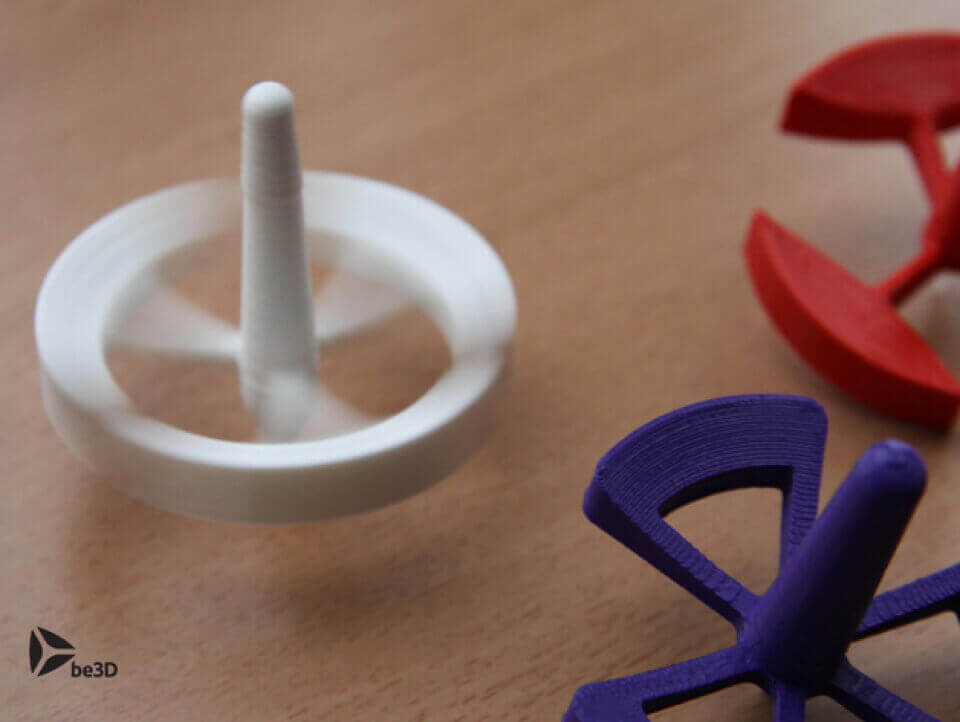What’s more indicative of childhood than spinning a top? Nothing, right. But fascination with tops – or should I say, fascination with spinning things – doesn’t wane as we age. Who amongst us hasn’t spun coins at one time or another? And what about all those spinning rides at amusement parks around the world? Spinning things are a part of our nature.

There’s something viscerally satisfying about watching a top spin. How long will it spin? What will happen if it hits something? And then there’s the sense of wonder involved. How is this thing able to balance on its point without falling over? Now that I think about it, the common top is probably a child’s first real introduction to the laws of physics (inertia, centrifugal force, etc.)…aside from all the falling they do (gravity can be heartless).
Tops come in all shapes and sizes and can be composed from nearly any material. User be3D has taken the top concept, given it their own unique twist, and made it possible for you to 3D print your own version. Plans can be downloaded from thingiverse (specifically,https://www.thingiverse.com/thing:542914) and can be printed in three formats: pointed end, rounded end, and wedge-shaped (see pictures for a better idea of what I’m talking about). Czech 3D printer manufacturers be3D_printers are responsible for the design.
The design of these 3D printed tops, and the reason they are called “orbital”, puts the bulk of the spinning mass at the border where it increases centrifugal force and contributes to easier spin and longer rotation.
So indulge your inner child, get over to thingiverse today, make your own 3D printed orbital tops, and see how long yours will spin.
If you don’t have access to a 3D printer, upload the 3D model to our 3D Printing Price Comparison to find the best online 3D printing services for you.
License: The text of "3D Printed Orbital Tops" by All3DP is licensed under a Creative Commons Attribution 4.0 International License.